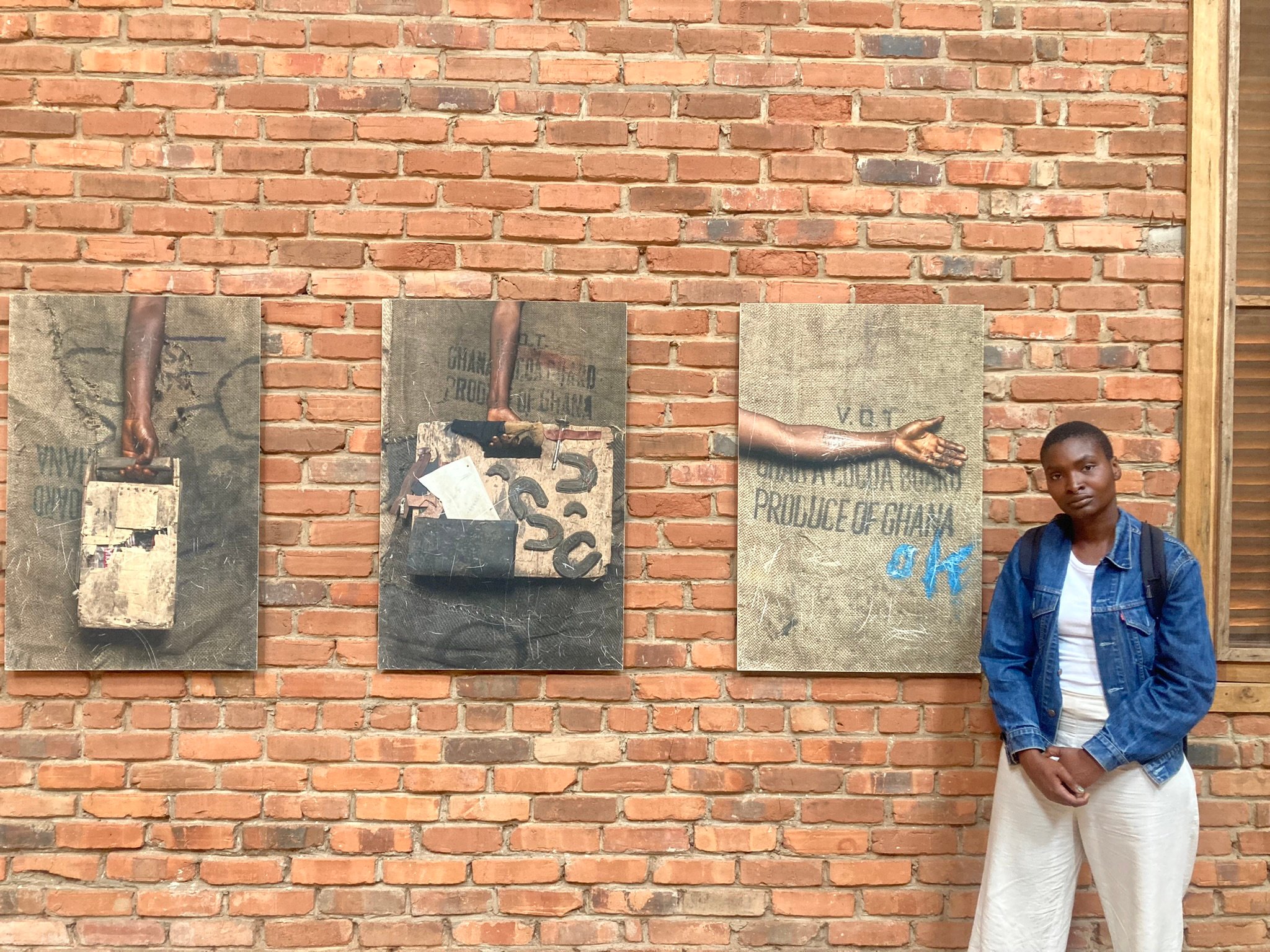
Kaitlene Koranteng at Red Clay Studios in Tamale, Ghana which straddles museum, archive and artists' studio
Research trips deepen curatorial practice
Art Fund supports UK curators, museum professionals and researchers to undertake activities that develop their curatorial practice. Programme coordinator Joe Jefford has been talking to one of the grant recipients.
Since 2012, Art Fund’s Jonathan Ruffer curatorial grants have supported more than 600 applicants and we continue to welcome enquiries from new applicants and organisations.
Recently, I caught up with one recipient of the grant – Kaitlene Koranteng, archivist and engagement producer at iniva (Institute of International Visual Arts). She is responsible for collecting, cataloguing and digitising iniva’s archive collections.
She shared with me how her research trip to Ghana in June this year, funded by Art Fund, has enriched her practice and deepened her interest in initiatives looking at Black-British histories.
Joe Jefford (JJ): As a recipient of a Jonathan Ruffer curatorial grant, can you tell me about your project?
Kaitlene Koranteng (KK): I had been reflecting on my positionality as a Black archivist and what that might mean for my practice. Simultaneously, at iniva we had been working to develop the accessibility of our archive collection, which captures a 30-year history of exhibition making, publishing and artist files from cultural practitioners from Black, Asian and Global Majority origins. My project was the result of these two threads coming together.
I felt it was important to explore perspectives outside of western frameworks. In Ghana I researched in various archives, libraries and visual arts spaces and conducted interviews with people working with collections.
JJ: Why did you choose Ghana?
KK: I had previously come across the JH Kwabena Nketia Archives – an incredible sound and moving-image archive – that documents stories, songs, dances and other oral and performance traditions.
I was impressed with the work being undertaken and it piqued my interest in local archival work. Another reason is my Ghanaian identity. As an archivist, I think it’s important to investigate your positionality, so having this research take place in Ghana felt vital.
JJ: What were the most impactful experiences in Accra and Tamale – and why?
KK: Oh, it’s hard to pick. In Accra, I had the pleasure of meeting participants of the Photojournalism and Documentary Practice programme at the Dikan Center, a non-profit organisation dedicated to fostering creative leaders.
I hadn’t come across Dikan before, so it was great to discover the work they were doing, including the development of their library, and learn about their plans for a photographic archive. I met the Dikan students and their openness, warmth and knowledge helped to shape my research trip.
In Tamale, visiting Red Clay studios was a special experience. The space, initiated by Ibrahim Mahama, straddles museum, archive and artist studio. It captures histories of labour, development and the culture of Northern Ghana, which are too rarely spoken about.
As I approached the red earthen structure of Red Clay studios I was welcomed by planes and colonial-era trains that not only serve as spaces for learning but also monuments of the past. Red Clay studios provided a unique perspective of exploring memory that I hadn’t encountered before.
JJ: Your research explores a range of Black practices including drumming, dancing and everyday objects. What new perspectives did you gain?
KK: We’re at a key moment of development at iniva, so it’s important that we think beyond the norm. The perception of archives is often that they are stacks of paper organised into boxes. This can be the case, but they can be so much more.
Memory and history are about more than what can be written, so it’s important to think about other ways that memory is held. There are many non-tangible aspects of contemporary visual art that need to be considered. The collecting of performance art, for example, has been discussed recently at iniva and the insights gained from my Ghana trip are being used to develop how and what we collect in future.
JJ: What advice would you give other curators thinking of applying for a Jonathan Ruffer curatorial grant?
KK: The grant provided me with an opportunity to learn and reflect. The time and resources to do this type of research is often scarce, especially for archivists.
At first, I was unsure whether I was eligible as I am not a curator, but I found the fund was open to individuals working with collections and had a broad interpretation of what it means to develop curatorial expertise. I would encourage anyone who might be hesitating because they are not a curator to apply regardless.
Find out more about Art Fund’s Jonathan Ruffer curatorial grants.
Join the Discussion
You must be logged in to post a comment.